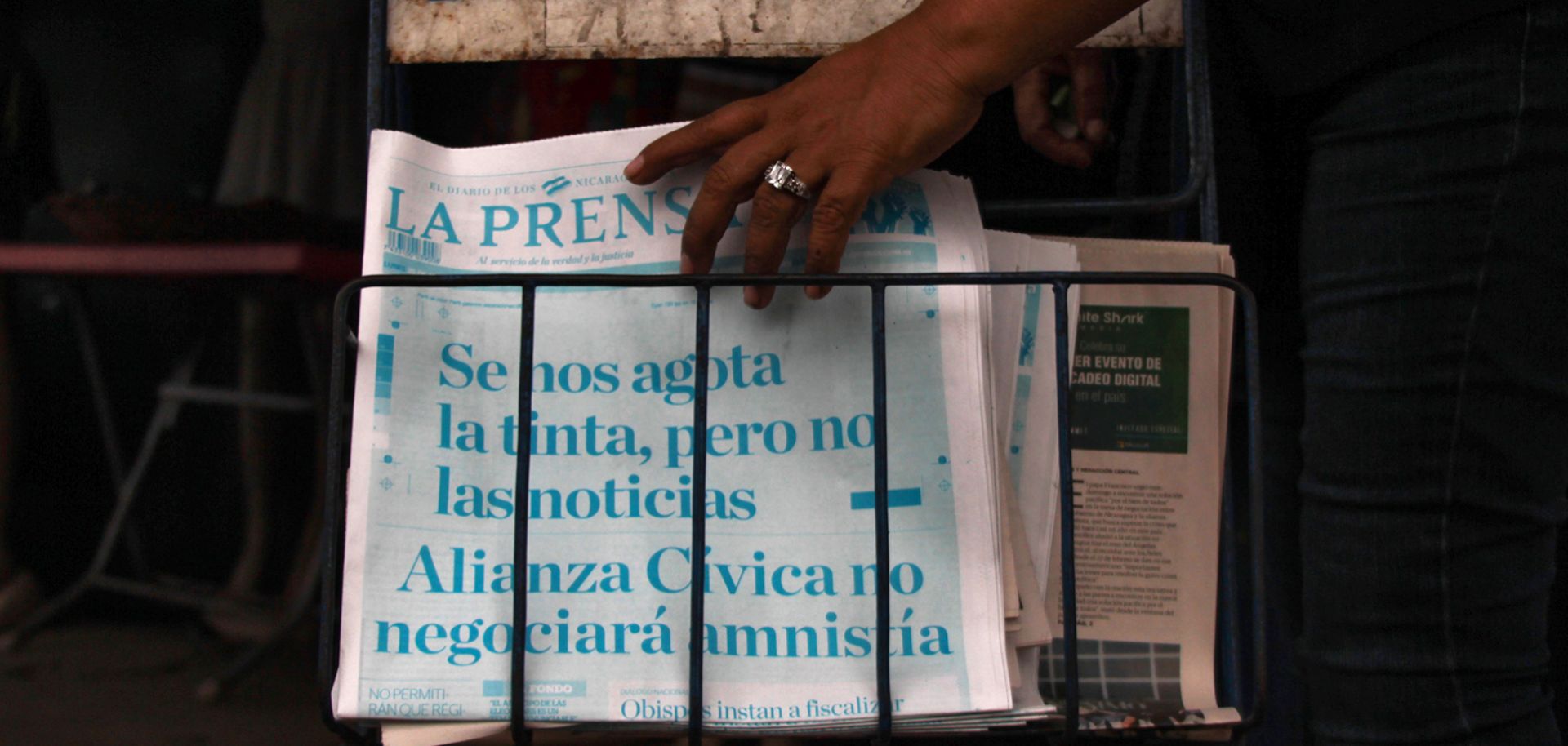GLOBAL PERSPECTIVES
What Happens When You Kill the Messenger in Nicaragua

Oct 23, 2019 | 09:00 GMT

A passerby picks up a copy of Nicaragua's La Prensa in Managua on March 25, 2019. The newspaper printed its cover in cyan, instead of black, with the headline, 'We are running out of ink, but not of news. The Civic Alliance will not negotiate an amnesty.' President Daniel Ortega's government is putting the pressure on opposition journalists, much like the Somoza regime did in the 1970s.
(MAYNOR VALENZUELA/AFP/Getty Images)
Highlights
- In 1978, the assassination of Nicaraguan journalist Pedro Joaquin Chamorro sparked unrest that quickly led to the overthrow of the Somoza family dictatorship.
- Current President Daniel Ortega, who helped lead the resistance to the Somozas, is now traveling down a similarly authoritarian road.
- Like the Somozas, Ortega has particularly turned his sights on Nicaragua's press in an attempt to muzzle his most prominent critics.
Subscribe Now
SubscribeAlready have an account?
